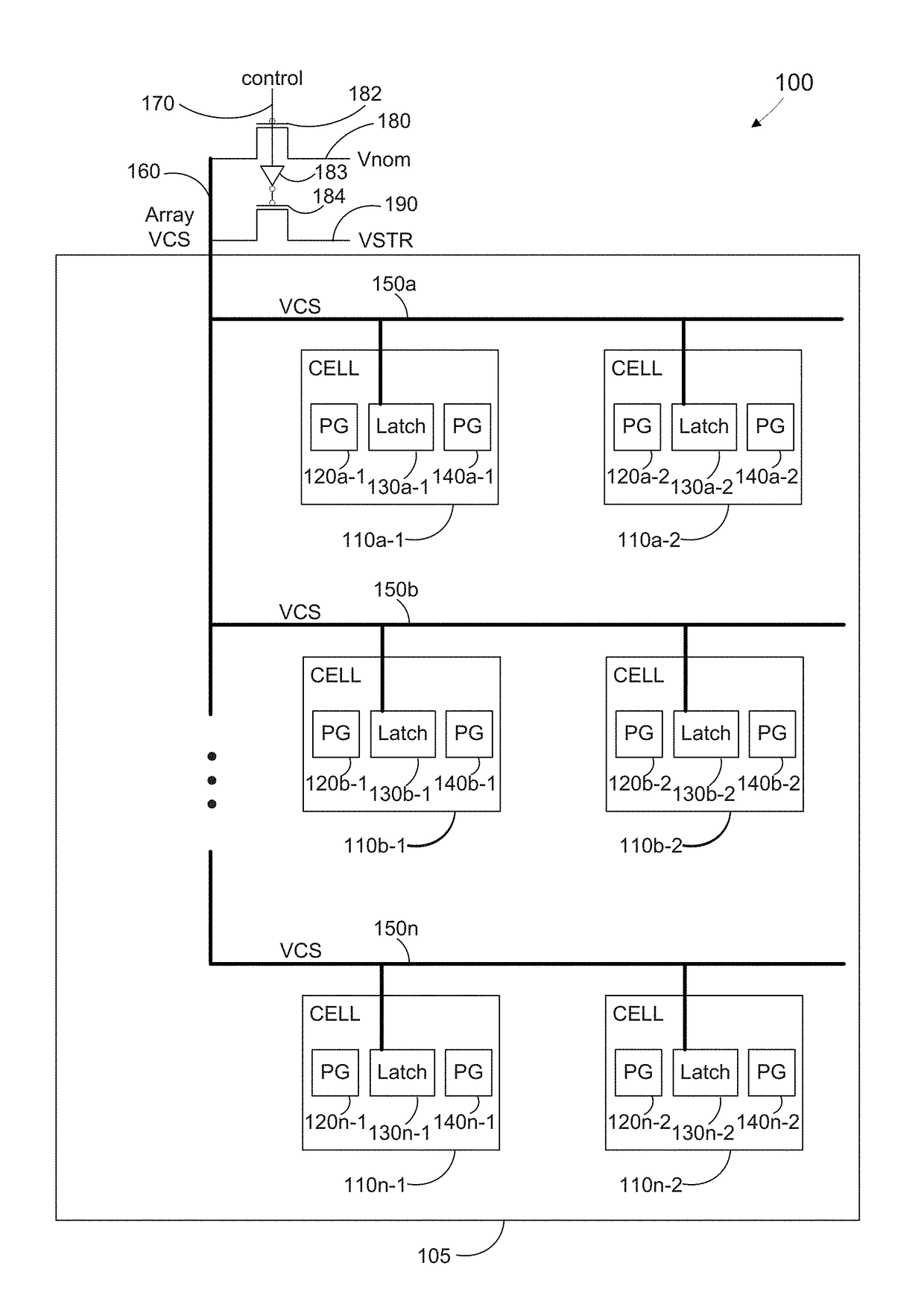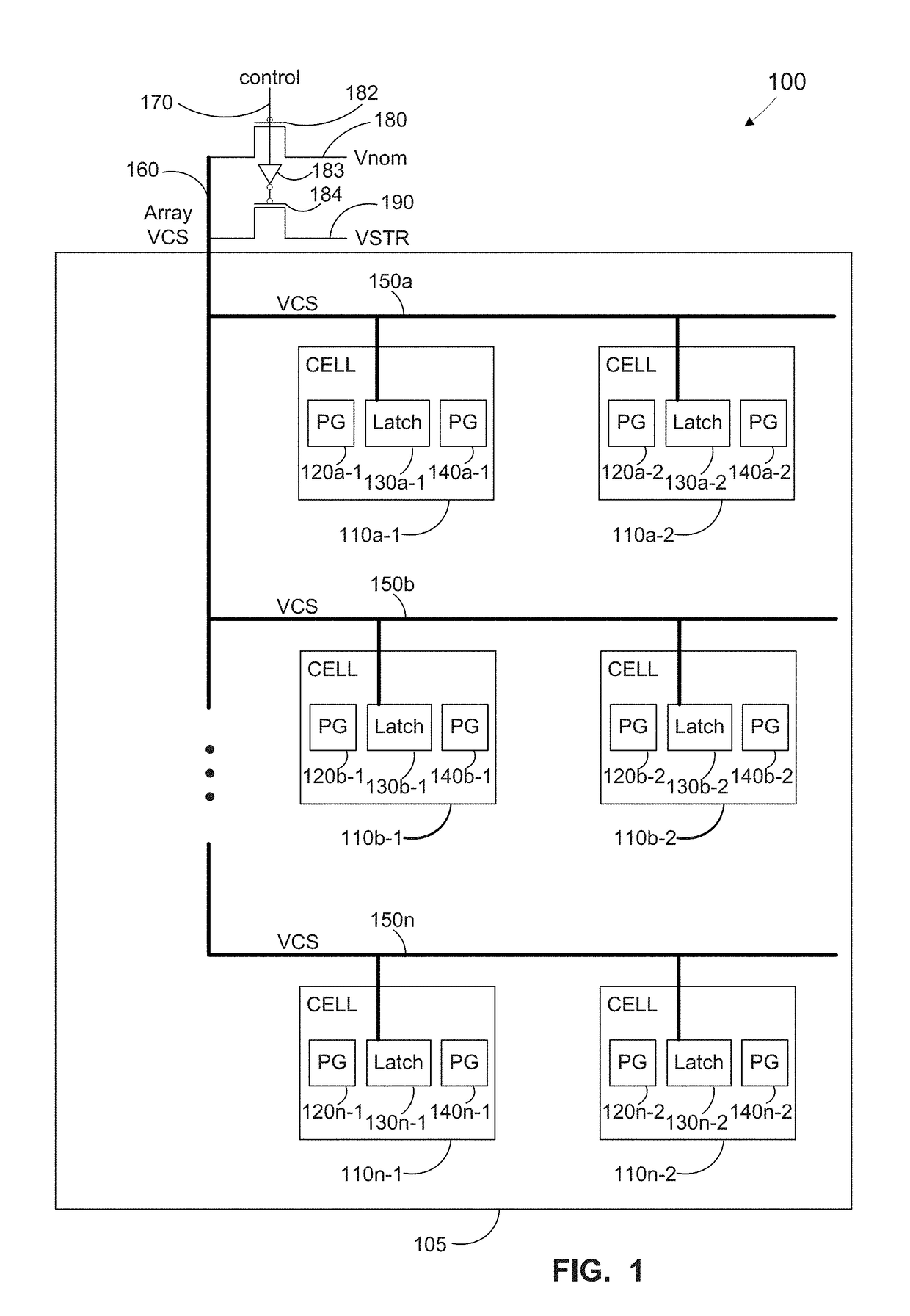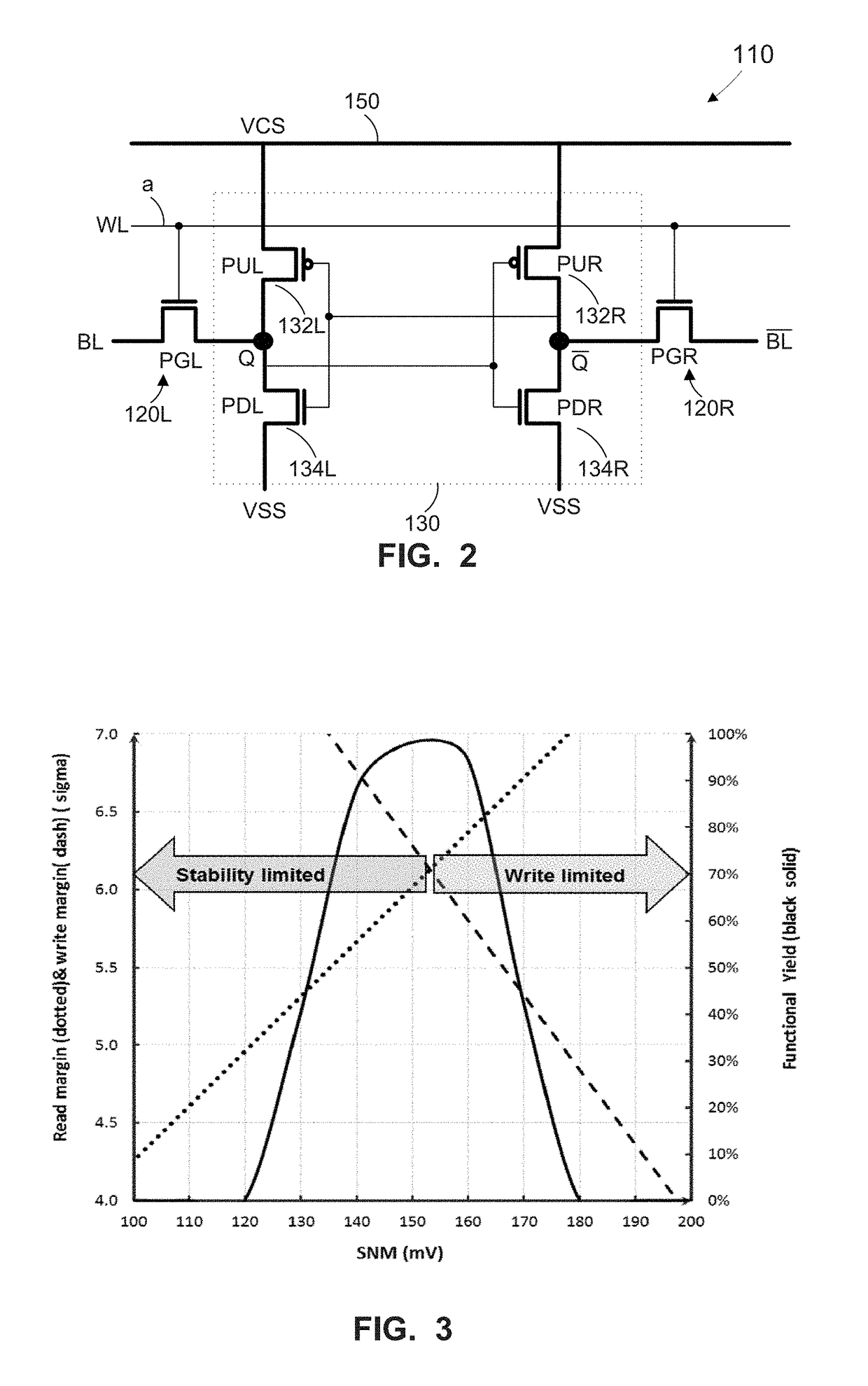Method, apparatus, and system for targeted healing of write fails through bias temperature instability
a technology of temperature instability and write failure, which is applied in the field of manufacture and use of sophisticated semiconductor devices, can solve the problems of reducing the yield of circuit elements, and bti tending to weaken the drive strength of transistors, etc., and achieves the effect of improving the yield and/or reliability of semiconductor devices
- Summary
- Abstract
- Description
- Claims
- Application Information
AI Technical Summary
Benefits of technology
Problems solved by technology
Method used
Image
Examples
example
[0041]Although the next several paragraphs will discuss an example of healing of bits with failing stability, the person of ordinary skill in the art, having the benefit of the present disclosure, will understand the principles embodied in this example are applicable to the healing of bits with failing writeability.
[0042]Though not to be bound by theory, turning to FIGS. 3-6, we review how to significantly reduce the vulnerability to BTI fails. By controlled selective bias of targeted failing bits, fails or shifts in Vmin can be rectified. This is accomplished with existing array design architectures using only the existing built in terminals (BL, BL, WL, VCS and VSS).
[0043]The concepts required for “healing” of failed or failing bits in large SRAM arrays on advanced CMOS nodes are discussed and demonstrated with both (20 nm and 14 nm) hardware. As scaling continues below 20 nm, greater than 500 Mb of SRAM on a die is not uncommon. The migration to FinFET devices and the lithographi...
PUM
 Login to View More
Login to View More Abstract
Description
Claims
Application Information
 Login to View More
Login to View More - R&D
- Intellectual Property
- Life Sciences
- Materials
- Tech Scout
- Unparalleled Data Quality
- Higher Quality Content
- 60% Fewer Hallucinations
Browse by: Latest US Patents, China's latest patents, Technical Efficacy Thesaurus, Application Domain, Technology Topic, Popular Technical Reports.
© 2025 PatSnap. All rights reserved.Legal|Privacy policy|Modern Slavery Act Transparency Statement|Sitemap|About US| Contact US: help@patsnap.com



